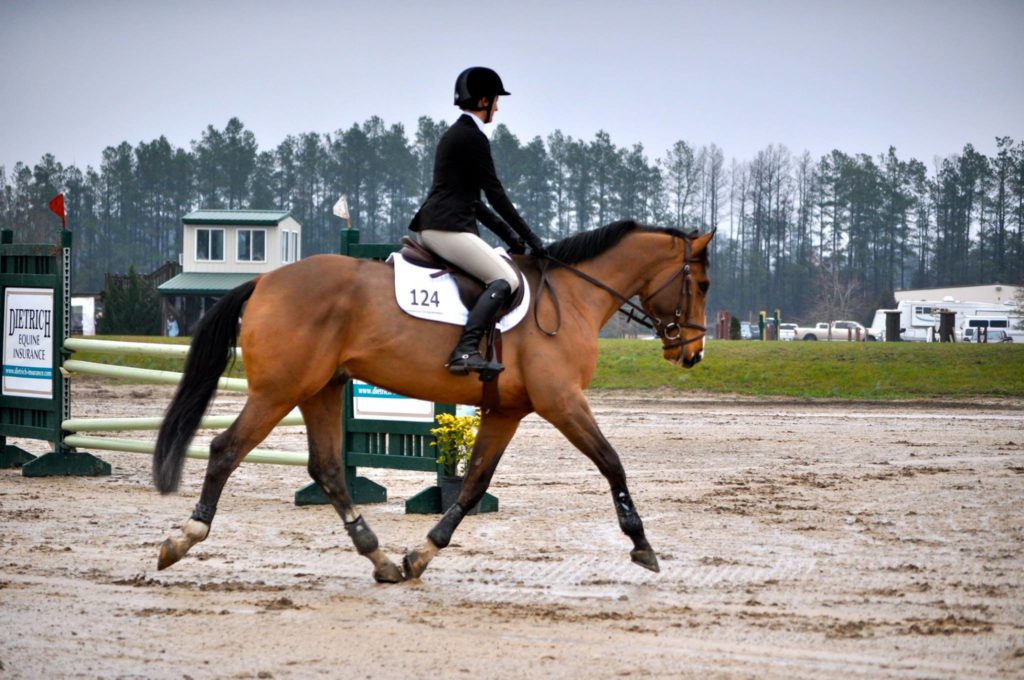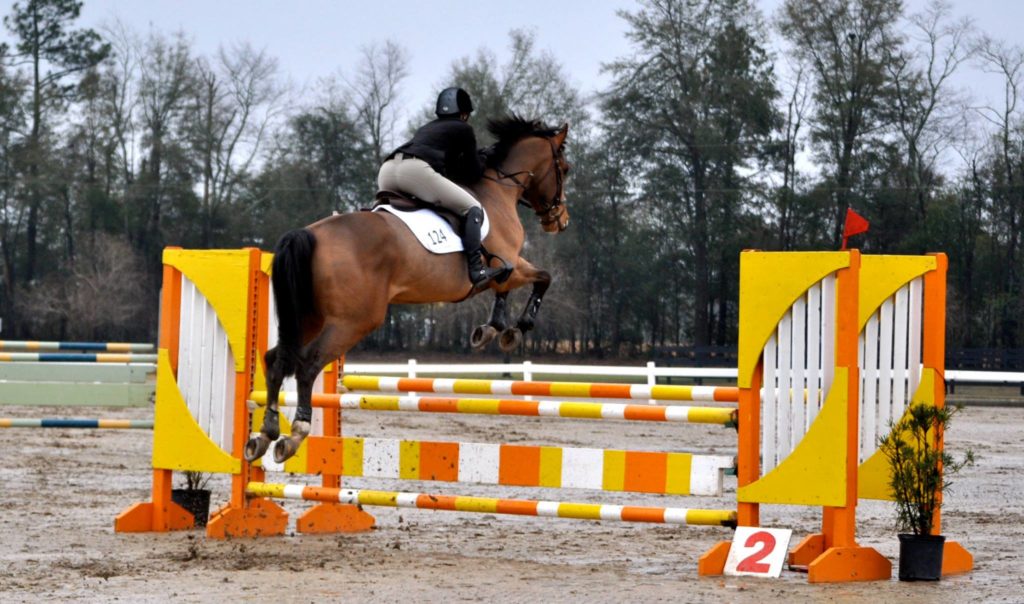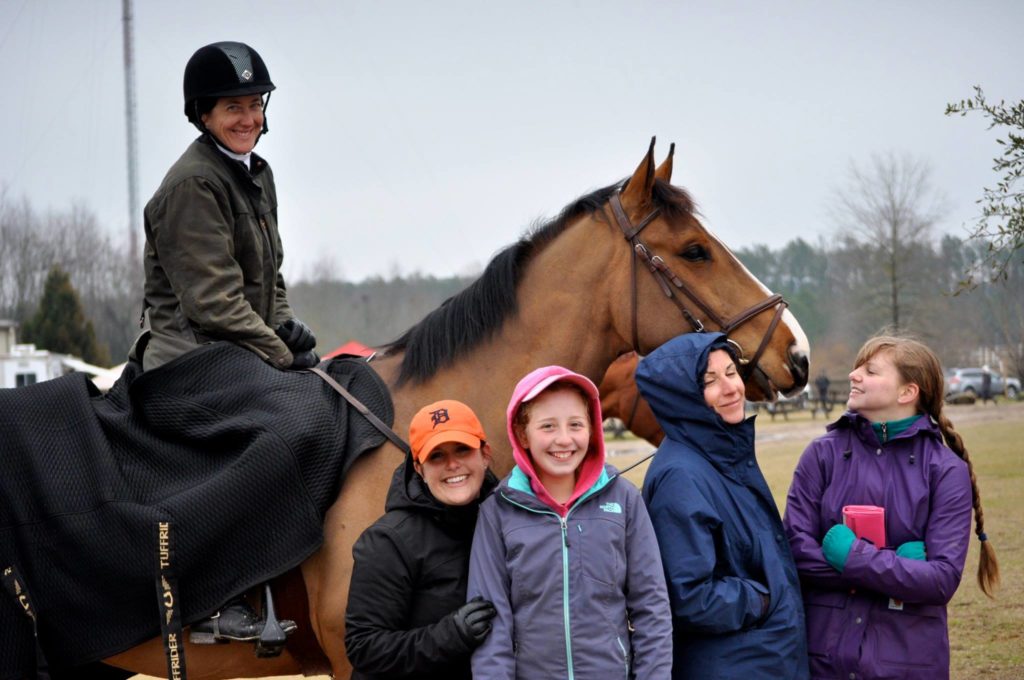Editor’s Note: Both on the team and around the barn, we’ve done further reflections on ride times and ring check-ins – especially with horse shows adopting new protocol in response to COVID-19. Many of the new horse show guidelines across the country are designed to help competitors avoid clustering traffic at the in-gate and warm up rings, such as providing online updates on “how many” and approximate class start timing. Susan Glover reflects on ride times in this piece.
Picture this. You are going to be competing in a horse show where, as usual, the first few days are for pros and then the ammies and juniors take the end of the week. You have submitted your entries beforehand, made all of the arrangements for trailering, feed and bedding, and are ready to go. A few days before the show begins, you get an email alerting you to the fact that the show has posted ride times on their website.
What is this crazy innovation, you may ask yourself? How can this be possible? WHAT UNIVERSE ARE WE IN? Dear reader, I submit that we are in the best future possible for the hunter/jumper world; one where there is no hurry up and wait ringside, where our horses and ourselves don’t have to stand in the sun/rain/wind/snow/hail/tornadoes for hours while we wait for a trainer to come over from the pony ring to coach Jenny Jumper in our ring. Where we know that we will be done showing on Day 2 at around 2:00pm, and we can go watch our friend go in her class at 3:15pm.
BUT WHAT ABOUT HACK CLASSES? WHAT ABOUT THE CHILDREN??? Listen, this isn’t rocket science. We can do this and we will be really happy with the results!
Here is how procedures work in eventing. Every horse and rider pair is signed up for their division by a certain closing date. They send in their Coggins and health certificates, organize stabling and shavings if needed, and they either pay in advance or wait until they get to the event. Early the week of the event, the show organizers post the ride times for dressage and show jumping for the lower levels, and dressage and cross-country for the upper levels.
Here is an example of a lower level, one-day event. Betty Beginner Novice knows that she does her dressage test at 9:30am, and then her show jumping round is at 11:46am. She completes her dressage test (it went great! Yay!) and goes back to her stall or trailer to let her horse chill out for a bit, maybe have his braids pulled, and get a quick bath. Then, she changes out her dressage tack and clothing for jumping tack and clothing. As soon as Betty finishes show jumping (one rail! Bummer!), she heads down to the start box at cross country. If all goes well (clear cross country! Whoop whoop!), she is done by noon. Time for drinks and snacks!
For the upper level competitors, or three day events in general, dressage and cross country have ride times. On the last day, placement on the leader board determines who goes when in the show jumping ring. If I am in second place out of 20, I go second to last. If I am in last place I have the dubious pleasure of being able to go first, when the ring opens at 8:30am, or whenever.
See? It’s easy! The beauty of this for trainers is that they have a nice map of where all of their riders are going to be and when. For those instructors who are also riding, it may be more complicated but again — they know their own ride times, and they know their clients’ ride times. Nancy Novice does dressage at 10:32am and show jumping at 12:56pm. Trainer’s Preliminary horse goes at 11:15am and 1:31pm. Timmy Training and his horse go at 12:18pm and 3:19pm. The trainer knows she has to be at dressage for her clients at this or that time, and at show jumping or the cross country warm up at the other times. She can have her groom get her own horse ready for her phase, ride, and then meet her next client at dressage/show jumping/XC. And so on. If it is a one day show, there can be a whiteboard with this information back at the trailers. For a multi-day show, the barn’s aisle can have the board posted outside the tack stall.
 Photo by Morgan Connolly.
Photo by Morgan Connolly.
OK, but how would this come together for the more complex, higher number of classes found at most Hunter/Jumper shows? Well, it would be a bit more work on the part of the show organizers beforehand, but overall, it would make their lives easier, too. Competitors would have to pre-enter, which would mean the show has an exact idea of the maximum number of competitors.
Let’s think through an example. The schedule says that Ring 1 will have the Medium Green ponies starting at 8:30am, with 15 entries, given two minutes each (I have no idea if this is an appropriate amount of time, but work with me here). That means that the class should be done sometime around 9:00am. Each rider knows their time, and each trainer knows when their own Paul Pony was competing, so they could coordinate that with their other horses and riders in Rings 2, 3, 4, etc. The Medium Pony under saddle is at 10:00am. All of those little guys have to be at Ring 1 to hack then. Course walks and ring drags would have marked times, too, the same as in eventing. Low Children/AAs walk at 11:30am; the High Junior/AO Classic walks at 3:00pm, Ring 4 dragged after Class 78 at 2:00pm. And so on.
Instead of random adds and drops, there could be a limit at the end of each jumping class for how many adds would be allowed. If you had a terrible ride in the previous class and want to go in another one for redemption, your friend/mother/trainer/minion can trot over to the ring and see if any slots are open in that class. If so, you claim one and go at the end of the scheduled times. If not, well, that’s show business. Last minute decisions couldn’t be made to bring this or that horse, but again, that means everything is very clearly laid out and there is a map of who is going and who isn’t. If you have to scratch, well, that’s part of normal life. Many events that require pre-payment allow people to sell their entry before the ride times are posted, and the new person can then be slotted in whatever division they need. Shows can develop a protocol that works for them and their customers over time to deal with these particularities.
 Photo by Morgan Connolly.
Photo by Morgan Connolly.
What about conflicts, when Theo Trainer’s rider Abby A/O Jumper goes at around the same time as his Larry Large Junior Hunter, or Ethel Equitation? Well, here are a few solutions. When entries are sent, in everyone has to list their trainer so the secretary already knows who has which horses and riders. They do this at events, spacing out people so the trainers/riders with multiple horses can be where they need to be. Or, again, there can be some flexibility. If Abby wants to wait until the end, she can be moved down to one of the open add-on slots, trainer can coach/coax Larry through his round(s), and then go warm up Abby for her class. At events when things are running ahead of schedule, riders who are ready can go in the ring before their scheduled time (although they don’t have to!), meaning that by the time Abby goes, the ring could be all caught up to where it should be for the next class to start when it should. Have something weird pop up, like a shoe needing to be tacked on last minute? Send someone over to the ring and see if you can be moved down the roster.
I know this sounds complicated, and there would certainly be a learning curve for everyone involved. On the other hand, if eventers and dressage people can do it, shouldn’t we give it a try? It would get rid of so many frustrating aspects of horse showing. Certainly it would be safer in this age of COVID-19, when it is not going to be cool to be standing around with a bunch of other random people hoping the last person to go in the class will step into the ring at some point before the end of the century.
If you miss your time because you aren’t paying attention, too bad. That’s on you and the result may be disappointment for you, but it means that no one else has to be unnecessarily inconvenienced by a single person’s inability or unwillingness to be on time. I once sat ringside on my behind for nearly two hours waiting for the last two people to go in the division before mine. In this instance I know there wasn’t any conflict because the riders AND their trainer AND their friends were all sitting nearby eating lunch and laughing at the increasing frustration of the gate person. This is an extreme example of entitlement and lack of consideration, and that show should have at the very least instituted a two-minute rule. Ride times would completely eliminate this sort of poor behavior and simply make it easier and necessary for everyone to organize themselves and their riders.
 Photo by Morgan Connolly.
Photo by Morgan Connolly.
Getting used to something new is part of all of our lives now due to this pandemic. Making changes in how we show is happening already as USEF, USHJA, and individual shows develop new strategies on how to run competitions safely. Ride times would not only make showing more efficient for all of us — it would be safer and simpler in the long run. Additionally, it would mean I could convince my eventer friends to come watch me! I am a lone little jumper rider in a barn full of eventers. Ride times would revolutionize my social life. Right now I have to bribe everyone to come watch with the enticing certainty of spending a whole day sitting around because I have very little idea of when I will actually be competing. Help me out! We can do this! I think we can figure this out, and I firmly believe that it would make all of us (not just me), happier in the end.
